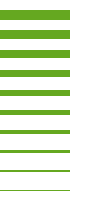https://doi.io-warnemuende.de/10.12754/misc-2021-0001
doi:10.12754/misc-2021-0001
© Author(s) 2021. This work is distributed
under "CC-BY 4.0"
Past and future development of hypoxia in the Baltic Sea 1850-2098
The animation was generated by Christian Dieterich (Swedish Meteorological and Hydrological Institute).
Abstract. Past and future development of hypoxia in the Baltic Sea 1850-2098. This animation shows summer mean bottom oxygen concentration [mL /L] from a model ensemble discussed by Meier et al. (2021, doi:10.1038/s43247-021-00115-9). The time series stretches from model year 1850 to 2098 and is comprised of the historical spin up (Meier et al., 2019a,b) 1850 to 1975, the historical period (Saraiva et al., 2019a,b) 1976 to 2005 and the RCP4.5 scenario combined with the nutrient load scenario according to BSAP 2006 to 2098 (Meier et al., 2021). Oxygen concentrations below 2 mL /L indicate hypoxic areas and negative values (red colours) indicate anoxic conditions. Hydrogen sulfide is considered as negative oxygen equivalents (1 mL H2S /L = - 2 mL O2 /L).
References: 1) Meier, H. E. M., C. Dieterich, and M. Gröger, 2021: Natural variability is a large source of uncertainty in future projections of hypoxia in the Baltic Sea. Commun. Earth Environ. 2, 50, https://doi.org/10.1038/s43247-021-00115-9
2) Meier, H. E. M., K. Eilola, E. Almroth-Rosell, S. Schimanke, M. Kniebusch, A. Höglund, P. Pemberton, Y. Liu, G. Väli, and S. Saraiva, 2019a: Disentangling the impact of nutrient load and climate changes on Baltic Sea hypoxia and eutrophication since 1850. Climate Dynamics, 53:1145-1166, https://doi.org/10.1007/s00382-018-4296-y
3) Meier, H. E. M., K. Eilola, E. Almroth-Rosell, S. Schimanke, M. Kniebusch, A. Höglund, P. Pemberton, Y. Liu, G. Väli, and S. Saraiva, 2019b: Correction to: Disentangling the impact of nutrient load and climate changes on Baltic Sea hypoxia and eutrophication since 1850. Climate Dynamics, 53:1167-1169, https://doi.org/10.1007/s00382-018-4483-x
4) Saraiva S., H. E. M. Meier, Helén Andersson, Anders Höglund, Christian Dieterich, Robinson Hordoir, and Kari Eilola, 2019a: Baltic Sea ecosystem response to various nutrient load scenarios in present and future climates. Climate Dynamics, 52: 3369-3387, https://doi.org/10.1007/s00382-018-4330-0
5) Saraiva S., H. E. M. Meier, Helén Andersson, Anders Höglund, Christian Dieterich, Matthias Gröger, Robinson Hordoir, and Kari Eilola, 2019b: Uncertainties in projections of the Baltic Sea ecosystem driven by an ensemble of global climate models. Frontiers in Earth Science, 6:244, https://doi.org/10.3389/feart.2018.00244
Citation
Download
Full Article or Dataset [12,4 MiB]
